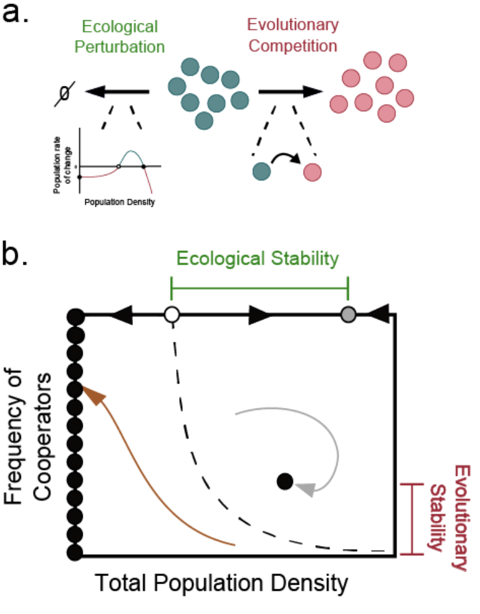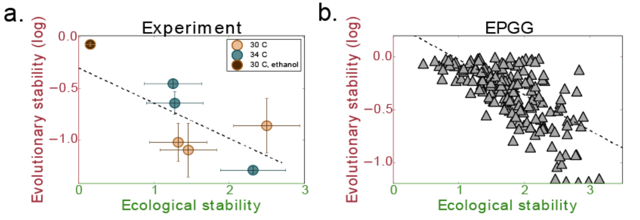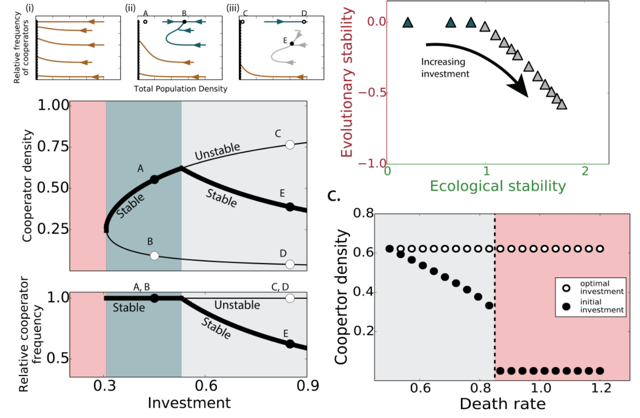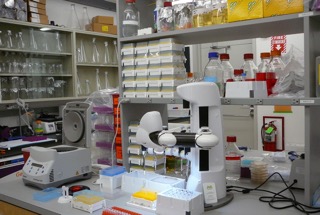
Imagine a tiny world replete with its own bustling marketplace, rife with competition and cheaters. This image may have resonance with microbial life—microscopic communities seemingly distinct from our own.
At Yale University’s Microbial Sciences Institute, microbial populations are being studied through a new lens: economics. Alvaro Sanchez, assistant professor of Ecology & Evolutionary Biology established a laboratory at Yale in July 2016 to explore this idea both theoretically and at the bench.
In Sanchez’s laboratory, microbial populations are theorized in the context of two very different threats. The first challenge to these communities is comprised of changes to their ecosystems, such as new limitations on food supply or shifts in the environment. The second challenge, which is of particular interest to Sanchez, is the threat of “freeloaders”—microbes that do not contribute any energy into extracting nutrients from food sources in the environment, but instead benefit from nutrients produced and secreted by other, more industrious microbes. According to Sanchez, such products that are secreted into the environment can be thought of as “public goods”; they are produced to ensure there are enough nutrients in the environment for the population to keep growing, though they could be taken for granted, just like our own public goods.

“Since producing these enzymes [that can yield microbial public goods] is costly, these freeloading [microbes] get the benefits without paying the costs,” Sanchez said. “It brings up the question of whether these freeloading [microbes] would have an evolutionary advantage and eventually exclude the producers,” he added.
Sanchez and his team hypothesize that there are distinct tradeoffs between discouraging freeloaders and sustaining the population as a whole. “The problem is, when cells do [resist freeloaders], they become ecologically fragile,” Sanchez said. Producers could limit their production of public goods to ward off freeloaders; however, during times of inhospitable environmental changes, extra nutrients that would normally help to sustain the population would be lacking. As such, the population as a whole—including the producers—would be more susceptible to destruction. “There is a tradeoff between evolutionary stability and ecological resilience,” Sanchez said, as these freeloaders present an evolutionary threat to the survival of the population.

Sanchez’s team is currently developing a living model of these theories, which may explore yeast populations and their production of sugar, which is controlled by particular enzymes. One option that Sanchez might pursue is a system in which the generation of these enzymes is dependent on how much enzyme has already been expressed—microbial populations already are able to gauge this state by detecting how much sugar is in their immediate environment.
By tinkering with the genomes of yeast, Sanchez’s team can theoretically induce populations to follow the economic strategies of fixed investment or conditional investment. A microbial population adhering to fixed investment would produce increasing amounts of enzyme until they reach a production ceiling, after which they would stop producing the enzyme. Microbial populations pursuing a conditional investment strategy, on the other hand, would evaluate the levels of sugar in their environment to determine how much additional enzyme should be expressed; these enzymes in turn will break down larger food particles to yield more of this sugary public good.
These strategies may help microbial populations discourage cheaters while maintaining resilience to environmental changes. “The next step is to make these theoretical strategies work experimentally,” Sanchez said. While Sanchez’s team is currently able to distinguish between producers and freeloaders based on their enzyme expression levels, the challenge will be to ‘teach’ these microbes some economics—encouraging dynamic changes in gene expression that resemble investment strategies in the human realm.

